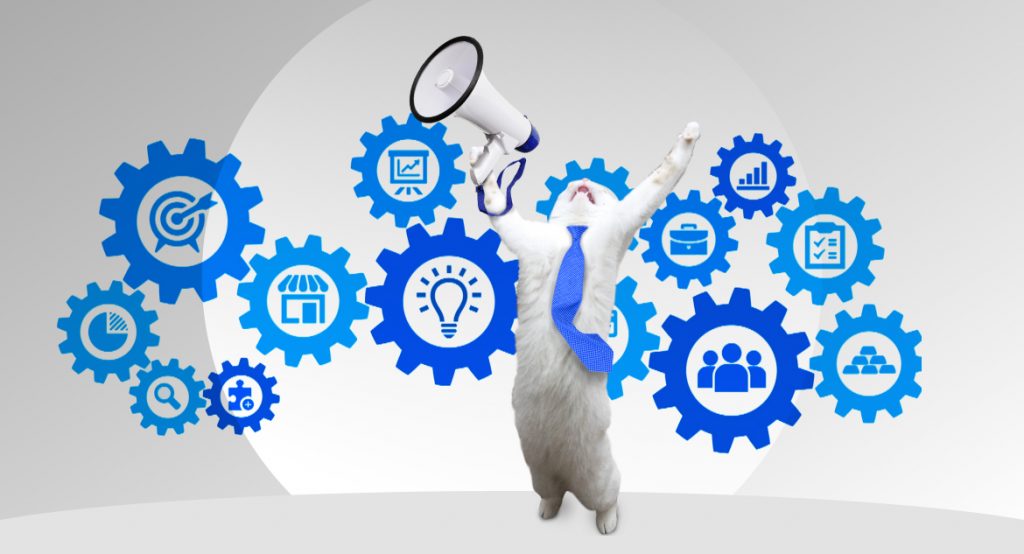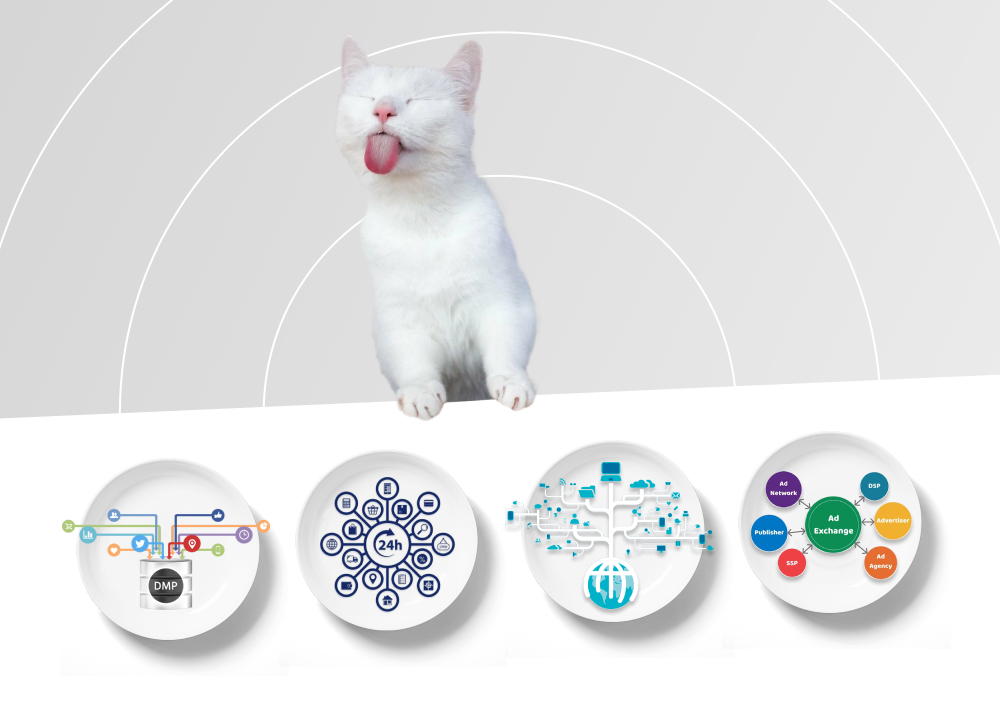In 2021 Nike bought Datalogue, a data integration startup; Neiman Marcus acquired a tech startup for shopper personalization; Walmart and McDonald's have purchased several Adtech assets. As investor Eric Franchi told Insider, great customer experience is a paramount category and not a fuzzy notion anymore. That is why, marketers have to be straightforward in answering the question 'what is the Adtech industry' to get the data and digital advertising right.
So, in our new article, we will clarify the essential features of advertising technology. Let us also see how it empowers businesses to meet their customers' demands and get the most out of the digital advertising space.
written by:
Alexey Kovsh
Senior Solutions Architect
Contents
The Digital Advertising Industry: Then and Now
When did online advertising technology start? The initial point of the industry is October 27, 1994 with an online banner ad. The ad consisted of a small message in a rainbow font that offered a new type of promotion. It was an innovative idea of HotWired to additionally monetize some space of their web page just like in printed press. The idea became a hit.
In the meantime, a lot has changed since the rise of banner ads. We see that new opportunities in advertising technology have led to the transformation of the way we perceive digital ads.
According to HubSpot, 91% of the surveyed noticed that ads have become more intrusive than just a couple of years ago. The researchers are sure that targeted ad experience is a pivoting tendency today.
There is also a valuable estimation in the eMarketer report that the investments in digital advertising will reach $785.08 billion in 2025. That is 72% more compared to the results of 2020. And the researchers are sure that the main contributor to such booming demand in the Adtech market is the current-day rise of technological innovations in advertising.
The Adtech Ecosystem
What can we find in advertising technology? Well, to put it short, it is beneficial for all the parties involved.
We’ll start by noting that it utilizes various tools and software platforms that help advertisers deliver ad messages to potential customers. For publishers, respectively, the tech provides automotive monetization of their inventory with ads. As for businesses, Adtech solutions help plan and execute novice marketing strategies.
So, both the demand and supply sides get significant benefits from advertising technology. For media agencies and traders, it is the key element to appeal to internet users and develop businesses.
Furthermore, there is a principal difference between traditional media agencies and Adtech. For example, if you wanted to start an ad campaign in a printed magazine or a newspaper, you would have to turn to a media agency, study the suitable publications for relevant audiences, analyze their reach and ad rates, etc.
Then the advertiser would start placing the ads in various publications. And you would have to wait quite a lot of time to start getting results.
How has Adtech revolutionized the advertising processes? Frankly speaking, the core media buying process is mainly the same today. But Adtech enables you with multiple effective tools for managing advertising campaigns and considerably speeds up the delivery of your advertising messages.
Let us check out the key ingredients of the Adtech ecosystem.
Ad Servers
They are applications responsible for automated ad placements. Advertisers, publishers, and specialized ad businesses can use them to run ad campaigns.
Media Agencies
You turn to them to get assistance in ad expenditure across all the possible channels. At the same time, unlike classical ad agencies, they do not undertake any creative aspects of your ad campaign.
DSPs (Demand-Side Platforms)
A demand-side platform is a tool for advertisers where you can buy ad spaces in web and mobile apps, videos, search results, etc. Ad platforms communicate with different ad slots. So, a DSP supplies marketers with an ad inventory in one place.
ATD (Agency Trading Desks)
An agency trading desk is a set of services for planning, buying, and managing ads across various platforms. With an ATD, you do not have to invest in an in-house team or a demand-side platform. In practice, it serves as a toned-down cheap equivalent to a DSP.
SSPs (Supply-Side Platforms)
A supply-side platform is a tool for publishers. In other words, an SSP is a counterpart to a DSP. With supply-side platforms, publishers can monitor the demand for ad slots and manage their ad inventory. Supply-side platforms consolidate your ad inventory, and you can determine a price floor, facilitate the auctions, and communicate with DSPs.
DMPs (Data Management Platforms)
They collect data from mobile apps, websites, CRMs, transactional systems, social networks, advertising campaigns, and other sources.
Such platforms use AI/ML technology and big data analytics to understand customers' behavior and trends. DMPs help create audience segments, review user data, and figure out the purchase intentions of your target audience.
CDPs (Customer Data Platforms)
They also collect and store user data like DMPs. Meanwhile, these platforms are focused on first-party data, which means that businesses work with the user data from their online resources.
Moreover, trusted direct user data on a customer data platform serves as a tried-and-true answer for advertisers and publishers in the challenge to target their audiences accurately.
Ad Networks
They are the glue of advertising technology. These companies consolidate ad inventory from different publishers and enable publishers with tools for sorting and choosing the ideally suited options. You can turn to such giants as Google Ad Exchange, Taboola, Baidu, or Yahoo Ad Tech to find the most relevant ad placements.
Ad Exchanges
They facilitate the selling and buying of ad inventories from ad networks here and there. The price of the ad space is the correlation of the supply and demand of a particular slot in real-time. So, the real-time bidding process defines the transaction.
Also, you can turn to open or private ad exchanges. The price of impressions on an open exchange is disclosed and the participation in the bidding process is open to anyone.
A private exchange is an invite-only auction. But it allows publishers to determine advertisers.
The Adtech Industry: Three Main Advantages
Is the Adtech industry only for simplifying and supplying? We believe that it allows you to step onto the next level to get the exact portrait of your target audience.
No wonder that programmatic advertising solutions are gaining more solid ground in digital advertising. According to eMarketer, the US programmatic digital display ad investments will reach $133.04 billion in 2023 from $96.89 billion in 2021.
So, what are the most significant benefits of Adtech? We have handpicked three main advantages.
Ad Spend Utilization
Want to deliver the right content to the right audience at the right time? Then you should rely on the Adtech ecosystem and get the most out of every dollar spent. You will be able to make better use of your budget and be sure that your ad campaign will reach your target audience. What is more, such a strategy will be completely under your control.
Top Efficient Ad Campaigns
Adtech empowers you with comprehensive plans and measuring tools for your advertising campaigns. For instance, with ad servers, you will get a bird's eye perspective on your ad campaign and know exactly where your ads are and how much revenue they produce. Ad software optimizes your productivity and saves your time.
A Deep Dive into the Marketing Funnel
One more significant Adtech advantage is its high level of adaptation. Now you can forget about all-purpose advertising campaigns. Digital advertising enables you to share your stories in unique ways. It will be based on your reasonable understanding of where your customers are in the marketing funnel.
For example, with Amazon DSP, you will access valuable insights and alter your ad strategy to reach relevant audiences at all stages of their shopping journeys.
Bottom Line
So, we see that Adtech has already revolutionized advertising technology. The Adtech ecosystem allows us to reach audiences quickly and improves measurability. We can run optimized advertising campaigns and maximize our effectiveness.
The Adtech market keeps on evolving. There is no doubt that the interest in its development from all the players in the Adtech industry will grow even further and higher.
Have an Adtech idea to bring to life? Contact our specialists to find out more about our Adtech software development expertise and services.

Contacts
Feel free to get in touch with us! Use this contact form for an ASAP response.
Call us at +44 151 528 8015
E-mail us at request@qulix.com











